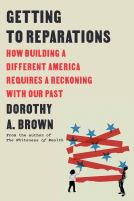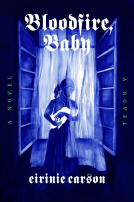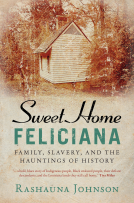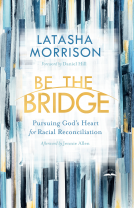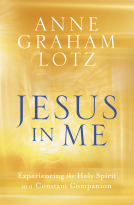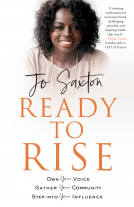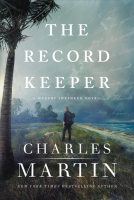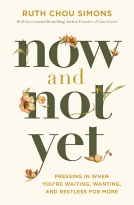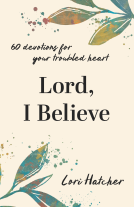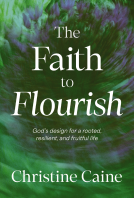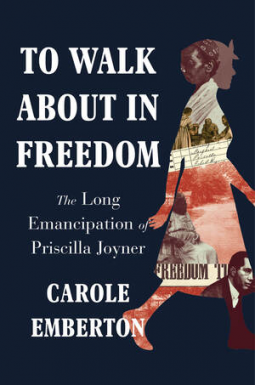
To Walk About in Freedom
The Long Emancipation of Priscilla Joyner
by Carole Emberton
This title was previously available on NetGalley and is now archived.
Send NetGalley books directly to your Kindle or Kindle app
1
To read on a Kindle or Kindle app, please add kindle@netgalley.com as an approved email address to receive files in your Amazon account. Click here for step-by-step instructions.
2
Also find your Kindle email address within your Amazon account, and enter it here.
Pub Date Mar 08 2022 | Archive Date Feb 28 2022
Talking about this book? Use #ToWalkAboutinFreedom #NetGalley. More hashtag tips!
Description
The extraordinary life of Priscilla Joyner and her quest—along with other formerly enslaved people—to define freedom after the Civil War.
Priscilla Joyner was born into the world of slavery in 1858 North Carolina and came of age at the dawn of emancipation. Raised by a white slaveholding woman, Joyner never knew the truth about her parentage. She grew up isolated and unsure of who she was and where she belonged—feelings that no emancipation proclamation could assuage.
Her life story—candidly recounted in an oral history for the Federal Writers’ Project—captures the intimate nature of freedom. Using Joyner’s interview and the interviews of other formerly enslaved people, historian Carole Emberton uncovers the deeply personal, emotional journeys of freedom’s charter generation—the people born into slavery who walked into a new world of freedom during the Civil War. From the seemingly mundane to the most vital, emancipation opened up a myriad of new possibilities: what to wear and where to live, what jobs to take and who to love.
Although Joyner was educated at a Freedmen’s Bureau school and married a man she loved, slavery cast a long shadow. Uncertainty about her parentage haunted her life, and as Jim Crow took hold throughout the South, segregation, disfranchisement, and racial violence threatened the loving home she made for her family. But through it all, she found beauty in the world and added to it where she could.
Weaving together illuminating voices from the charter generation, To Walk About in Freedom gives us a kaleidoscopic look at the lived experiences of emancipation and challenges us to think anew about the consequences of failing to reckon with the afterlife of slavery.
About the Author: Carole Emberton is associate professor of history at the University at Buffalo. A National Endowment for the Humanities Public Scholar, she is the author of the prize-winning Beyond Redemption. She has written for the New York Times and the Washington Post, and lives in Buffalo, New York.
Advance Praise
"To Walk About in Freedom is truly a must read for anyone interested in seeing not only the nation’s racial past in a fresh light thanks to Emberton's brilliant re-mining, re-excavation, re-reading, and re-interpretation of the lives of the newly freed, but also in being able to come to all previous renderings of it better informed and to view them with a far more critical gaze." - Heather Ann Thompson, Pulitzer Prize-winning author of Blood in the Water
"For Priscilla Joyner’s unsettling but moving story, Carole Emberton uses the historian’s tools to excavate the precious and deeply personal complexities of formerly enslaved people’s lives, including accounting for the multiple possibilities of family histories often shrouded in mystery. This is an important contribution to the history of families and freedom in post–Civil War America." - Kidada E. Williams, author of They Left Great Marks on Me
"Priscilla Joyner’s ‘long emancipation’ is a story at once distinctive and collective, a story of the trials, tribulations, joys, heartaches, and struggles that paved the African American road out of slavery, a story of the intimacies, raw emotions, and unanswered questions that have long encased southern life. Carole Emberton tells Priscilla Joyner’s story with sensitivity and consummate skill." - Steven Hahn, Pulitzer-Prize winner and author of A Nation Without Borders
Available Editions
| EDITION | Hardcover |
| ISBN | 9781324001829 |
| PRICE | $28.95 (USD) |
Average rating from 5 members
Featured Reviews
 Anita S, Librarian
Anita S, Librarian
Priscilla Joyner, born an enslaved person in North Carolina in 1858, was raised by a white slaveholder and did not know the truth about her parents. She recounted her life story for the Federal Writers' Project, which, according to the Library of Congress, "contains more than 2,300 first-person accounts of slavery and 500 black-and-white photographs of former slaves. These narratives were collected in the 1930s as part of the Federal Writers' Project (FWP) of the Works Progress Administration, later renamed Work Projects Administration (WPA). At the conclusion of the Slave Narrative project, a set of edited transcripts was assembled and microfilmed in 1941 as the seventeen-volume 'Slave Narratives: A Folk History of Slavery in the United States from Interviews with Former Slaves.'"
Although the white interviewers were told to respectfully capture the speech and dialects of the African-Americans they were interviewing, many of them disregarded this instruction which resulted in the perpetuation of racist stereotypes and caricatures that are harmful. The author of this book, Carole Emberton, has striven to preserve the speech of the interviewees as faithfully as possible while adding in some corrections in standard English to phrases or words that were twisted by the interviewers.
Emberton notes that when Priscilla was first approached by interviewers to participate in the FWP, to recount what she remembered about being an enslaved person, who her master was, if she was whipped, etc., she hesitated, trying to forget that time. "Were it not for the life history she narrated to Thelma Dunston, she undoubtedly would have slipped into the quiet oblivion that most of us do because we lead ordinary, unremarkable lives."
Full emancipation remains an unfulfilled promise, as the author reminds readers. The charter generation did not experience emancipation as a single event. Freedpeople carried the collective trauma of absences into their futures. In spite of this, Priscilla's story shows how the charter generation found joy, created families and communities, and how they tended to gardens in their yards.
One crucial thing to remember about the FWP was that most of the fieldworkers and interviewers assigned to speak to formerly enslaved people were white Southerners who were used to myths of "happy" enslaved people and "benevolent" masters. The elderly enslaved people were very familiar with the white expectations of this type of exchange, and knew that if they did not tell the fieldworkers what they wanted to hear--things such as that their master was kind and never whipped them--that there would be consequences. They were expected to go along with the white supremacist narrative of what happened to them to assuage the sensibilities of the white interviewers.
Emberton further notes that because of the gaps in the documentary records relating to Priscilla, this is not the entire story. She calls this volume more of a microhistory, "a small book about big things."
Delving into Priscilla's fascinating and tragic history, her parentage, and her early life, Emberton exposes the reality that relations between white women and Black men, although less common, did occur in the early South. When white women gave birth to mixed-race children, this complicated the caste system of racial slavery. It was further complicated by the law of primogeniture, passed in 1662, which stipulated that a child inherited his mother's status. So for instance, if a child was born to an African-descended enslaved woman, the child would be considered an enslaved person as well. If the mother was white, however, the child would not be considered enslaved, and would be a free person of colour or "slaves without masters." Further, the author goes into great depth about the white men who, perhaps wanting to avoid scandal or for other reasons, claimed mixed-race children as their own and therefore legally ensured those children were considered white, as may have been the case with Priscilla.
The book also goes into great depth about the start of the Civil War in North Carolina as well as Priscilla's experiences during this time. As well, the author goes into detail about the Reconstruction Era and what happened to Priscilla's household at the war's end. Her siblings singled her out for abuse. "Children learn the lessons of racial etiquette early, and Reconstruction no doubt reinforced ones they may have already learned about the necessity of violence to keep Black people in their place."
Later on, when Priscilla marries a man named Lewis, they settle near Stony Creek in Nash County and have children. The author chronicles Lewis's work, as well as how taking in laundry/washing was a common way for the wives of sharecroppers to earn an income. There is also a section that chronicles the first Great Migration. Whereas later migrations saw many African-Americans move to New York, Chicago, etc., the first Great Migration was more local, and African-Americans typically moved somewhere else in the South such as New Orleans or Atlanta. Further on, the author goes into depth about how Priscilla's children learned to navigate environments where racialized violence was a regular threat and they were constantly derided for their appearance.
The author devotes a significant portion of the book to discussion the treatment and mythologizing of elderly formerly enslaved people who were "celebrated" as figures in white American culture--every one from "Old Uncle Ned" to Uncle Remus. In other words, they became tokens of white nostalgia and sentimentality, as well as how this fed into the "Lost Cause" myth of the Confederacy.
Finally, the author discusses the implications of the white editorial control over the collection and transcription of interviews with the charter generation, particularly those collected by Roscoe Lewis and his staff. One such editor was the Director of the Virginia Writers' Project (VWP), a woman named Eudora Woolfolk Ramsay Richardson. A former suffragist, she saw herself as the opposite of the "Southern Belle" image popularized by 'Gone with the Wind.' She did not keep her opinions to herself. She believed women were capable and that they should have the same opportunities as men did in education, work, and politics. However, she was also an avid white supremacist who was dedicated to the idea of southern nobility and white paternalism. She, too, longed for an idyllic past filled with "kind masters and loyal slaves." It should come as no surprise then that she supported the Lost Cause. She saw herself as a guardian of Virginia's "noble heritage" and did not want anything that might make her state look bad such as truthful historical accounts of formerly enslaved people. She questioned Lewis's goal of writing American history from a Black perspective and questioned the accuracy of the accounts he collected. Lewis was also Black and as such, Richardson was convinced that he "lacked the requisite objectivity" to conduct the project well. She undermined Lewis at every turn, questioning the fact that some of the people he interviewed had ever been enslaved people. She constantly questioned accounts of formerly enslaved people who recounted the harsh punishments they endured and referred to enslaved people as valuable property that a master would want to keep in good condition such as "a fine horse or good hunting dog" that should be kept fit.
Unfortunately, Richardson oversaw Priscilla Joyner's narrative. She removed the background of Priscilla's (likely) white mother, Ann Eliza, and the possible interracial relationship she had that produced Priscilla. Richardson even rewrote sections of Priscilla's testimony that completely altered her account, re-writing the history to make it look as though Priscilla's "old mistress" was the "best woman in the world." Essentially, she massacred Priscilla's account in an attempt to make it palatable for white readers and to make the white readers comfortable. Thankfully, people like Sterling Brown--the son of a formerly enslaved man and a schoolteacher--battled these false narratives and aimed to restore the true history as accurately as possible. Brown also battled the white interviewers who transcribed interviews with formerly enslaved people in such heavy dialect that they read like Uncle Remus tales.
As an interesting aside, there is also some discussion of Zora Neale Hurston's involvement in the project as well as her approach to ethnography and writing. When Hurston interviewed African-Americans in the south, a number of whom were formerly enslaved, she rendered their dialect as she heard it, a decision that drew criticism from other Black writers and cultural commentators, who argued that this reinforced racist stereotypes and prejudices that whites held about Black people. Others disagreed with that criticism and praised Hurston for capturing authenticity and preserving oral testimonies in written form for posterity.
Highly recommended for anyone with an interest in slave narratives, 19th century social conditions on plantations, and historical accounts from formerly enslaved people.

